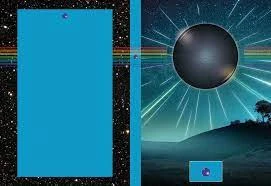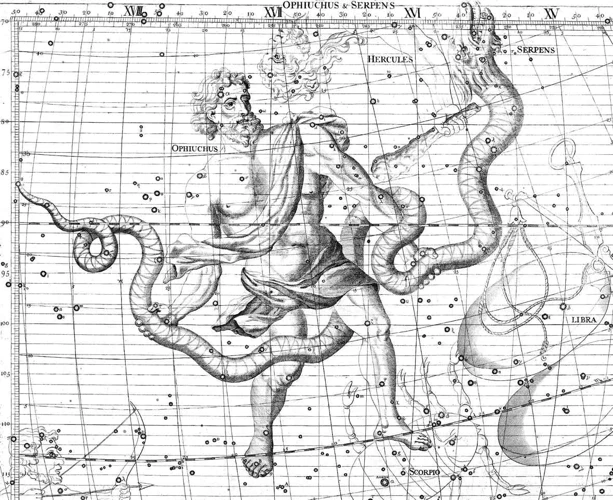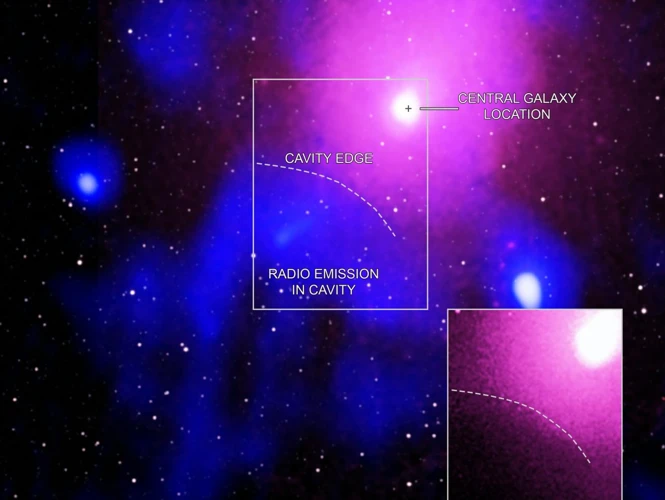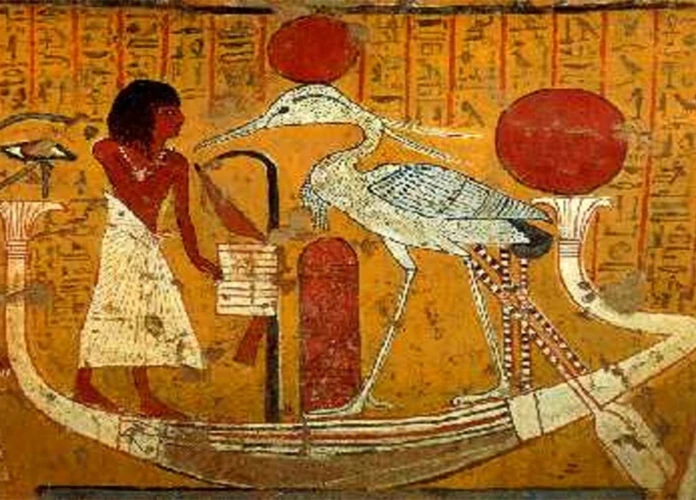The night sky has always held a spellbinding allure for humans, captivating our imagination and stirring our sense of wonder. One of the most breathtaking celestial phenome
Contents
- The Origin of Meteor Showers
- Ancient Mythological Interpretations
- Symbolism and Interpretations
- A Modern-day Perspective
- Conclusion
-
Frequently Asked Questions
- 1. What causes meteor showers?
- 2. How often do meteor showers occur?
- 3. Can meteor showers be seen from anywhere on Earth?
- 4. Are all shooting stars part of a meteor shower?
- 5. How can I observe a meteor shower?
- 6. Are meteor showers dangerous?
- 7. Can meteor showers be predicted?
- 8. How long do meteor showers last?
- 9. Do all meteor showers have names?
- 10. Do all ancient mythologies have stories about meteor showers?
- References
-
Frequently Asked Questions
- 1. How do meteor showers occur?
- 2. When can meteor showers be seen?
- 3. What is the significance of meteor showers in ancient mythology?
- 4. How did ancient civilizations interpret meteor showers?
- 5. How did meteor showers impact ancient cultures?
- 6. Are there any modern-day cultural festivals related to meteor showers?
- 7. What role do meteor showers play in astrology and the zodiac?
- 8. Can meteor showers be seen all over the world?
- 9. Have any famous works of art or literature been inspired by meteor showers?
- 10. Can meteor showers have any scientific or practical implications in modern times?
- References
- Read More
The Origin of Meteor Showers

Meteor showers have fascinated humans since time immemorial, but it is only in more recent history that we have come to understand their true origins. Ancient civilizations, lacking the scientific knowledge we have today, relied on their observations and mythological interpretations to explain the mesmerizing phenomenon. It wasn’t until the early 19th century that scientists began to unravel the mystery of meteor showers. Ernst Chladni, a German physicist, hypothesized that meteor showers were caused by the Earth passing through debris left behind by comets. This theory was later confirmed by the work of astronomers such as Giovanni Schiaparelli and George Johnstone Stoney, who identified specific comets associated with meteor showers. The connection between meteor showers and comets was further solidified by the discoveries of the Leonids and Perseids, which are named after the constellations Leo and Perseus respectively – the radiant points from which the meteor showers appear to originate. These radiant points correspond to the paths of particular comets that intersect with Earth’s orbit. The orbital paths of comets and the timing of their showers have been carefully mapped, allowing us to predict and anticipate these celestial events with greater accuracy. The scientific understanding of meteor showers does not diminish their beauty or the rich cultural significance they hold in ancient mythology. Rather, it enhances our appreciation for the cosmic dance that takes place overhead, connecting us to the mysteries of the universe.
Ancient Observations of Meteor Showers
Ancient civilizations were keen observers of the night sky, and their records are replete with accounts of meteor showers that captured their attention and imagination. In Chinese records dating back to at least 687 BCE, meteor showers were described as “burning stones falling like rain.” In ancient Greek texts, references to meteor showers can be found in works by authors such as Homer and Hesiod. The Greeks believed that shooting stars were divine messages from the gods. The Roman poet Ovid also documented meteor showers in his seminal work, “Metamorphoses,” often linking them to significant events or the appearance of deities. The Norse people, too, had their own interpretations of these celestial displays, associating them with the fiery trail of the god Thor’s hammer, Mjölnir. Additionally, ancient civilizations in the Americas, such as the Mayans and the Aztecs, chronicled their observations of meteor showers in their codices and made connections between these cosmic events and their religious practices. These ancient observations not only demonstrate the awe-inspiring impact of meteor showers on our ancestors but also reveal their profound understanding of the interconnectedness between the celestial realm and human existence.
Scientific Explanation of Meteor Showers
The scientific explanation of meteor showers lies in our understanding of comets and their debris. Comets, often referred to as “dirty snowballs,” are icy bodies that originate from the outer regions of the solar system. As a comet nears the Sun, its icy nucleus undergoes sublimation, where the ice transitions directly into gas, creating a glowing coma and tail. Along its orbit, comets leave behind streams of dust and debris, forming a trail of tiny particles. When Earth’s orbit intersects with these trails, the debris enters our atmosphere at high speeds, causing friction with the air molecules. The friction heats up the debris, causing it to ignite and vaporize, resulting in the spectacular display of light that we observe as meteor showers. These meteors, commonly known as shooting stars, are actually the streaks of light created by the vaporization of the comet’s debris as they burn up in our atmosphere. The specific name of a meteor shower comes from the constellation nearest to the radiant point, the direction from which the meteors appear to originate. The Perseids, for example, are named after the constellation Perseus. Studying meteor showers allows scientists to gain insights into the composition of comets and their evolution over time. By analyzing the spectra of meteors, scientists can determine the presence of various elements and compounds. This scientific understanding not only enhances our knowledge of comets but also helps us comprehend the cosmic processes that have shaped our solar system. Understanding the scientific explanation of meteor showers allows us to marvel at the wonders of the universe in a different light, appreciating the intricate mechanisms that lead to these breathtaking celestial displays.
Ancient Mythological Interpretations

Ancient civilizations across the globe revered meteor showers and wove them into their rich tapestry of mythology, attributing mystical and symbolic significance to these celestial events. In Greek mythology, meteor showers were often associated with the gods and acted as divine messages or interventions. For example, the Perseids meteor shower was named after the heroic figure Perseus, who slew Medusa and rescued Andromeda. According to the myth, the radiant point of the Perseids shower represented the tears of joy shed by Perseus and Andromeda upon their successful union. Roman mythology also interpreted meteor showers as signs from the gods. The Leonids, named after the lion constellation Leo, were believed to be manifestations of the powerful and celestial lion associated with the goddess Juno. Norse mythology saw meteor showers as the sparks from the anvils of the dwarves, who were skilled blacksmiths. These cosmic sparks were seen as divine blessings, symbolizing prosperity and protection. Other ancient civilizations, such as the Chinese, Mayan, and Native American cultures, also attributed significance to meteor showers, associating them with prophecies, celestial spirits, and spiritual transformation. The recurring motif of meteor showers across diverse mythologies speaks to the universal human fascination with these dazzling displays of celestial beauty, inviting us to ponder our place in the grand cosmic scheme.
Greek Mythology
In Greek mythology, meteor showers were often associated with divine events and celestial beings. The Greeks believed that meteor showers were the result of the gods appearing in the mortal realm, manifesting their power and influence. One prominent example is the Perseids, which derive their name from the hero Perseus. According to Greek legend, Perseus was the son of Zeus and Danae, a mortal princess. Perseus was tasked with slaying the monstrous Medusa, and during his perilous journey, he was aided by the gods. The Perseid meteor shower, which occurs every year around August, is said to commemorate Perseus’ victory over Medusa. The radiant point of the shower is located near the constellation Perseus, from where Perseus is said to have unleashed his heroic feats. Another example is the Leonids, named after the constellation Leo. In Greek mythology, Leo represents the Nemean Lion, a ferocious creature slain by the mighty Heracles as one of his twelve labors. The Leonid meteor shower was believed to be the fiery trail left by the Nemean Lion as it soared through the heavens, forever immortalizing its defeat. These celestial events held immense cultural significance for the Greeks, serving as reminders of their mythical heroes and the gods’ intervention in mortal affairs. It is through these rich mythological interpretations that meteor showers continue to captivate us and remind us of our connection to the ancient past.
Roman Mythology
In Roman mythology, meteor showers held significant meaning and were often associated with the gods and their divine actions. One notable meteor shower in Roman mythology is the Perseids, which is tied to the hero Hercules. According to the legend, Hercules was the son of Jupiter, the king of the gods, and Alcmene, a mortal woman. The Perseids were said to commemorate the heroic deeds and battles of Hercules. Each shooting star represented a drop of sweat or blood shed by Hercules during his conquests. The Roman poet Ovid described this connection in his work “Metamorphoses,” highlighting the celestial nature of Hercules’ achievements. Another mythological interpretation in Roman culture centered around the idea that meteor showers were the fiery chariots of the gods racing across the night sky. The Romans believed that these divine chariots were a sign of the gods’ presence and intervention in earthly matters. This belief further solidified the association between meteor showers and the supernatural in Roman mythology. The awe-inspiring sight of shooting stars streaking across the heavens evoked a sense of wonder and reverence, with Romans attributing these celestial phenomena to the power and influence of their gods. It is through these mythological interpretations that meteor showers became ingrained in the cultural fabric of ancient Rome, shaping their beliefs and understanding of the cosmos. The celestial dance of meteor showers continues to captivate our imaginations, reminding us of our enduring connection to the mysteries of the universe.
Norse Mythology
Norse mythology, with its rich tapestry of gods, giants, and heroes, also incorporates the enchanting spectacle of meteor showers into its ancient tales. In Norse mythology, meteor showers were believed to be sparks and embers from the forge of the mighty dwarf craftsmen known as the Sons of Ivaldi. These celestial showers were said to mark great events and cosmic battles in the Nine Realms of Norse cosmology. One notable meteor shower in Norse mythology is the Draupnir meteor shower, named after the magical golden ring forged by the dwarves. According to legend, every ninth night, the god Odin would release a shower of sparks and meteors from the ring, symbolizing his association with wisdom and mystical powers. The meteor showers were also seen as omens, foretelling both good and bad fortunes. For instance, if a meteor shower appeared during periods of turmoil, it was believed to signal impending conflict or the wrath of the gods. On the other hand, a meteor shower during a time of celebration was seen as a blessing or favorable sign. The Norse people revered these cosmic events, attributing divine meaning to their occurrence, and incorporating them into their sagas and poetry. The intertwining of meteor showers within Norse mythology demonstrates the deep connection between the natural world and the spiritual beliefs of the ancient Norse people.
Other Ancient Civilizations
The connection between meteor showers and ancient mythology extends beyond Greek, Roman, and Norse cultures. Many other ancient civilizations also incorporated these celestial displays into their belief systems and mythological narratives. In ancient Chinese mythology, meteor showers were seen as omens of significant events, both positive and negative. The Chinese believed that the appearance of shooting stars symbolized the passing of souls or the arrival of celestial beings. In Hindu mythology, meteor showers were associated with the god Indra, the king of the heavens. It was believed that these showers were caused by the celestial beings known as the Maruts, who rode on their golden chariots across the sky. Native American tribes, such as the Navajo, Apache, and Hopi, had their own interpretations of meteor showers. Some saw them as messages from the spirits, while others considered them to be the souls of ancestors passing by. It is fascinating to see how diverse civilizations across the globe observed and mythologized these celestial events, highlighting the universal wonder and awe inspired by meteor showers. Each culture infused its own unique interpretations, weaving them into the tapestry of ancient mythology.
Symbolism and Interpretations

Meteor showers have held deep symbolic significance in numerous ancient cultures, giving rise to a variety of interpretations. In astrology and zodiac systems, meteor showers are seen as celestial events that influence human destiny and personality traits. The Perseids, for example, are associated with the constellation Perseus and are linked to characteristics such as bravery and heroism. In Norse mythology, meteor showers were believed to be the sparks and embers from the weapons of gods and warriors, making them powerful symbols of divine intervention and blessings. Greek and Roman mythology also embraced the symbolism of meteor showers, associating them with gods and goddesses. For instance, the Greek god Zeus was said to use thunderbolts created by meteor showers as weapons against his adversaries. Meanwhile, the Roman goddess Juno was often depicted riding a chariot across the sky, which scholars believe may have been inspired by the visual spectacle of meteor showers. Additionally, meteor showers have been interpreted as signs or omens, foretelling events such as wars, famines, or the birth of great leaders. These interpretations demonstrate the profound impact meteor showers had on the collective imagination of ancient civilizations, shaping their beliefs and cultural practices. Today, while some of these interpretations may have faded, the captivating beauty and cosmic symbolism of meteor showers continue to inspire artists, writers, and dreamers alike.
Significance in Astrology and Zodiac
Meteor showers hold a significant place in astrology and the Zodiac, intertwining the celestial events with the mystical realm of horoscopes and personality traits. Each Zodiac sign is associated with specific qualities and characteristics, and meteor showers play a role in influencing these aspects of individual lives. The position of the stars and planets during a meteor shower can be seen as a powerful alignment of cosmic energies that can have a profound impact on human emotions and experiences. For example, the Perseid meteor shower, associated with the constellation Perseus, is said to bring forth a burst of creative energy and inspiration. In astrology, this shower is often linked to the fire signs – Aries, Leo, and Sagittarius. The Leonid meteor shower, named after the constellation Leo, is believed to enhance leadership qualities and ignite the desire for self-expression. On the other hand, the Geminid meteor shower, which radiates from the constellation Gemini, is associated with communication and mental clarity. This connection between meteor showers and astrology points to a deeper understanding of how the cosmos can influence human behavior and personality traits. It reinforces the notion that we are intricately connected to the celestial bodies above, shaping our destinies in mysterious ways. Whether one takes a scientific or mystical perspective, the significance of meteor showers in astrology and the Zodiac cannot be denied – they serve as celestial mirrors reflecting our individual and collective journeys through the cosmos.
Meteor Showers as Portents or Omens
In the realm of ancient mythology, meteor showers were often regarded as profound portents or omens. The appearance of a meteor shower was believed to foretell significant events or upheavals in the world. Civilizations like the ancient Greeks and Romans saw these celestial displays as messages from the gods or celestial beings, offering insight into the future. For example, the Leonid meteor shower, named after the constellation Leo, was associated with the Nemean Lion in Greek mythology, and its appearance was believed to signify the imminent arrival of a powerful leader or the onset of a great war. Similarly, in Roman mythology, the Perseid meteor shower, named after the hero Perseus, was seen as a sign of divine favor or intervention. The ancients carefully observed the timing, intensity, and direction of meteor showers, believing that these celestial occurrences carried significant messages and should not be ignored. The interpretation of meteor showers as portents or omens was deeply ingrained in the cultural and religious practices of ancient civilizations, bridging the gap between the celestial and terrestrial realms. To them, these fiery streaks across the sky were a direct line of communication between the gods and humankind, serving as a reminder of the grandeur and unpredictability of the cosmos. The profound impact of meteor showers as omens can be seen in ancient texts, artwork, and even archaeological records, revealing the enduring influence of these celestial events on human consciousness and perception of the world.
Meteor Showers as Divine Intervention or Blessings
Meteor showers were often seen as divine interventions or blessings by ancient civilizations, who interpreted these celestial displays as messages from the gods or other supernatural beings. In Greek mythology, for example, meteor showers were thought to be the sparks from the forges of Hephaestus, the god of fire and craftsmanship. These fiery trails were believed to bring good fortune and prosperity to those who witnessed them. Similarly, in Norse mythology, meteor showers were seen as the arrows of the gods, indicating their favor and protection. The Romans also associated meteor showers with their deities, considering them to be divine blessings or omens of significant events to come. The belief in the divine nature of meteor showers extended beyond these well-known civilizations, with various ancient cultures perceiving them as messages from their own pantheons of gods and goddesses. The celestial spectacle served as a reminder of the mysterious and powerful forces that governed the universe, inspiring awe and reverence among those who witnessed them. The interpretation of meteor showers as divine intervention or blessings reflects the profound impact these cosmic events had on the spiritual and cultural beliefs of ancient civilizations, reminding humanity of its connection to the divine.
Meteor Showers as Catalysts for Human Transformation
Meteor showers have often been regarded as catalysts for human transformation in various mythological and cultural narratives. The awe-inspiring sight of shooting stars streaking across the night sky has evoked a sense of wonder and reflection, prompting individuals to contemplate their place in the grand tapestry of existence. In ancient mythology, meteor showers were seen as divine interventions or messages from the gods, guiding humans towards a path of growth and enlightenment. They were believed to herald significant events or mark pivotal moments in an individual’s life. This concept of celestial guidance has persisted throughout history, with astrology associating meteor showers with profound shifts and opportunities for personal evolution. Astrologically, meteor showers are often linked to cosmic energies, emphasizing their potential to awaken dormant talents, enhance intuition, and provide clarity in decision-making. Some astrologers interpret the harmonizing effects of trine aspects as influential during meteor showers, suggesting that these celestial events have the power to align individuals with their true purpose and potential. The belief in meteor showers as catalysts for transformation extends beyond astrology as well. In various spiritual and philosophical traditions, these cosmic phenomena are seen as moments of heightened energy and potential, offering individuals a chance to shed old patterns, embrace growth, and forge a new path forward. While the mechanisms behind these transformative effects remain elusive, the undeniable impact of meteor showers on human psyche and cultural beliefs persists to this day. As we gaze upon the breathtaking spectacle of meteor showers, we are reminded of our capacity for personal growth and transformation, and the profound interconnectedness between the celestial realm and our earthly existence.
A Modern-day Perspective

In modern times, meteor showers continue to capture the imagination of people around the world. While we now have a scientific understanding of their origins, the awe-inspiring nature of meteor showers has not diminished. Instead, these celestial events have taken on new meaning and significance in our modern-day perspective. One notable aspect is the incorporation of meteor showers into cultural festivals and celebrations. Many communities organize viewing parties and stargazing events to witness these extraordinary displays. The Perseid meteor shower, for example, is a popular event that attracts enthusiasts and curious observers alike. In addition to their role in cultural festivities, meteor showers have also found their way into various forms of art and literature. Painters and photographers seek to capture the ephemeral beauty of shooting stars streaking across the night sky, while writers and poets draw on their symbolism to evoke emotions and explore profound themes. The symbolism associated with meteor showers has also found resonance in astrology. In astrological interpretations, meteor showers can represent auspicious moments, celestial blessings, or even cosmic catalysts for personal growth and transformation. The trine aspect, known for its harmonizing effects in astrology, may be linked to the enchanting influence of meteor showers. Ultimately, in our modern-day perspective, meteor showers continue to inspire wonder, spark creativity, and remind us of our connection to the vast cosmos above.
Meteor Showers and Cultural Festivals
Meteor showers have long captivated the human imagination, inspiring not only myths and legends but also cultural festivals that celebrate these mesmerizing celestial events. Across different cultures and civilizations, meteor showers have been associated with auspicious occasions and marked with unique traditions and rituals. One such example is the “Night of the Shooting Stars” in Italy, known as the “Notte di San Lorenzo.” This festival, celebrated on the night of August 10th, coincides with the peak of the Perseid meteor shower. In this enchanting event, people gather in open fields, away from city lights, to witness the meteor shower in all its glory. They believe that each shooting star represents a wish or a dream, and as they watch the celestial display, they make silent wishes, hoping for their dreams to come true. In Japan, a meteor shower known as the “Tanzan Meteor Shower” is celebrated during the Tanabata Festival. According to Japanese mythology, this festival commemorates the reunion of two star-crossed lovers, represented by the stars Vega and Altair. An aspect of the festival involves writing wishes on colorful strips of paper and hanging them on bamboo trees, known as “Tanabata trees.” People gather to witness the meteor shower and express their hopes and dreams for the future. These cultural festivals not only offer an opportunity to witness the beauty of meteor showers but also serve as a reminder of our connection to the cosmos, our dreams, and the power of collective celebration. They provide a sense of unity and wonder, as people come together to marvel at the celestial spectacle, embracing the mystique and magic of the universe. Whether it’s the “Notte di San Lorenzo” in Italy or the Tanabata Festival in Japan, these cultural festivals create a sense of awe and reverence, bridging the gap between ancient mythological beliefs and modern-day celebrations. So next time you find yourself beneath the starry sky during a meteor shower, take a moment to reflect on the cultural festivities that have been inspired by these celestial wonders
Meteor Showers in Art and Literature
Meteor showers have long captivated the minds of artists and writers, inspiring them to incorporate these celestial events into their works of art and literature. The sheer beauty and ethereal nature of meteor showers have provided a rich source of symbolism and metaphorical meaning for creative expression. In art, meteor showers are often depicted as streaks of light or falling stars, adding a sense of magic and mystery to the composition. They symbolize luck, wishes, and the fleeting nature of existence. Famous artworks such as Vincent van Gogh’s “Starry Night” and Edvard Munch’s “The Scream” feature the captivating presence of shooting stars, evoking a sense of awe and existential contemplation. In literature, meteor showers have served as powerful motifs to convey emotions and pivotal moments. Writers have used meteor showers to represent moments of epiphany, the convergence of fate, or the arrival of significant events. For example, in Ray Bradbury’s “Fahrenheit 451,” a meteor shower symbolizes the awakening of the protagonist’s rebellious spirit. In Jules Verne’s “Journey to the Center of the Earth,” a meteor shower marks the beginning of the adventurers’ extraordinary journey. The incorporation of meteor showers in art and literature allows these cosmic events to transcend their scientific explanation and become catalysts for imagination and contemplation. They invite us to ponder our place in the universe and the fleeting beauty that surrounds us. Whether portrayed as omens, blessings, or moments of transformation, meteor showers continue to inspire the artistic and literary world, reminding us of the profound connection between the celestial and the human experience.
Conclusion

In conclusion, the connection between meteor showers and ancient mythology is a testament to the enduring fascination humans have with the night sky. These celestial events have captivated our imagination for centuries, inspiring awe, wonder, and divine interpretations across cultures and civilizations. While science has provided us with a deeper understanding of the origins and mechanics of meteor showers, it has not diminished the symbolism and significance attributed to them in ancient mythology. They continue to be seen as celestial omens, portents, and catalysts for transformation. From the captivating stories of Greek, Roman, and Norse mythology to the cultural festivals and artistic expressions inspired by meteor showers, these cosmic events hold a special place in our collective consciousness. Whether they are viewed through the lens of astrology, as divine blessings, or as celestial phenomena that connect humanity to a greater cosmic order, the beauty and mystery of meteor showers will continue to inspire us for generations to come. The allure of the night sky and the wonders it holds remind us of our place in the vastness of the universe, filling us with both a sense of humility and a yearning for exploration and discovery. As we gaze up at the heavens during a meteor shower, we are reminded of the incredible marvels that exist beyond our earthly realm, and our connection to the stars themselves.
Frequently Asked Questions

1. What causes meteor showers?
Meteor showers are caused by Earth passing through the debris left behind by comets or asteroids as they orbit the sun. These debris, made up of rocks and dust particles, enter Earth’s atmosphere and burn up, creating the beautiful streaks of light in the sky.
2. How often do meteor showers occur?
Meteor showers occur regularly throughout the year, with different showers peaking at different times. Some well-known meteor showers, like the Perseids and the Geminids, occur annually, while others may have less predictable cycles or occur at irregular intervals.
3. Can meteor showers be seen from anywhere on Earth?
Yes, meteor showers can be observed from all parts of the Earth, as long as the weather and visibility conditions are favorable. However, the visibility of meteor showers might be affected by light pollution in urban areas, so it’s often best to find a dark location away from city lights for optimal viewing.
4. Are all shooting stars part of a meteor shower?
No, not all shooting stars are part of a meteor shower. Shooting stars, or meteors, can be seen on any given night as random debris enters Earth’s atmosphere. Meteor showers, on the other hand, occur when Earth passes through a concentrated stream of debris, resulting in a higher number of visible meteors during a specific period.
5. How can I observe a meteor shower?
To observe a meteor shower, find a location away from bright city lights. Lie down or sit in a comfortable position with a clear view of the night sky. Be patient and allow your eyes to adjust to the darkness. Meteor showers are best viewed during their peak times, which can be found through astronomical calendars or by checking with local observatories or astronomical societies.
6. Are meteor showers dangerous?
No, meteor showers are not dangerous. The debris that creates meteor showers is mostly small and burns up in Earth’s atmosphere before reaching the ground. However, it is important to take necessary precautions when stargazing, such as dressing appropriately for the weather and being aware of your surroundings.
7. Can meteor showers be predicted?
Yes, scientists can predict meteor showers based on the known orbits of comets or asteroids that produce them. By tracking the paths of these celestial objects, astronomers can determine when Earth will intersect with their debris fields. These predictions provide estimates of when meteor showers will occur and their expected peak activity.
8. How long do meteor showers last?
Meteor showers can vary in duration. While some showers may last only a few hours, others can span several days or even weeks. The peak period, during which the highest number of meteors is expected to be visible, usually lasts for a night or two.
9. Do all meteor showers have names?
No, not all meteor showers have names. The named meteor showers typically derive their names from the constellation nearest to where their radiant point is situated. For example, the Perseids meteor shower is named after the constellation Perseus.
10. Do all ancient mythologies have stories about meteor showers?
While meteor showers are a captivating phenomenon, not all ancient mythologies have specific stories or beliefs associated with them. However, many ancient cultures, including the Greeks, Romans, and Norse, did attribute mythological interpretations to meteor showers, seeing them as signs, symbols, or events of significance in their respective mythologies.
References
- The Legend and Science Behind the Epic Meteor Shower
- Iron from the sky: Meteors, meteorites and ancient culture
Frequently Asked Questions

1. How do meteor showers occur?
Meteor showers occur when the Earth passes through the debris left behind by a comet or asteroid. These small particles, called meteoroids, enter our atmosphere and burn up, creating the streaks of light that we see as meteors.
2. When can meteor showers be seen?
Meteor showers can be seen throughout the year, but there are certain times when they are more frequent and visible. The most famous meteor showers, such as the Perseids and the Geminids, have specific peak dates each year when they are most visible.
3. What is the significance of meteor showers in ancient mythology?
Meteor showers have long been associated with divine intervention, omens, and transformations in ancient mythology. They were considered both awe-inspiring and mysterious, often believed to be messages or signs from the gods.
4. How did ancient civilizations interpret meteor showers?
Ancient civilizations, including the Greeks, Romans, Norse, and others, interpreted meteor showers in various ways. Some saw them as the arrival of gods or deities, while others viewed them as harbingers of change or impending events.
5. How did meteor showers impact ancient cultures?
Meteor showers had a profound impact on ancient cultures, shaping their beliefs, rituals, and even architectural designs. They were integrated into religious practices, used for divination purposes, and incorporated into mythological stories and legends.
Yes, there are several modern-day cultural festivals that celebrate meteor showers. For example, the “Perseid Meteor Shower Festival” held in Meteor Crater, Arizona, allows people to observe the shower and learn about its significance in a fun and educational setting.
7. What role do meteor showers play in astrology and the zodiac?
In astrology, meteor showers are believed to have an impact on human destiny and personality traits. They are associated with specific zodiac signs and are thought to influence certain aspects of an individual’s life, such as love, career, and personal growth.
8. Can meteor showers be seen all over the world?
Yes, meteor showers can be seen from various parts of the world, as long as the sky is clear and free from light pollution. However, the visibility and intensity of the meteor shower may vary depending on your location and the specific shower you are observing.
9. Have any famous works of art or literature been inspired by meteor showers?
Absolutely! Meteor showers have inspired many artists, writers, and poets throughout history. One notable example is Vincent van Gogh’s painting “Starry Night,” which depicts a mesmerizing starry sky with a prominent meteor shower.
10. Can meteor showers have any scientific or practical implications in modern times?
Yes, meteor showers have scientific implications in terms of understanding the composition and behavior of comets, asteroids, and cosmic dust. They also provide opportunities for scientific research and observation, allowing astronomers to gather valuable data about our universe.







